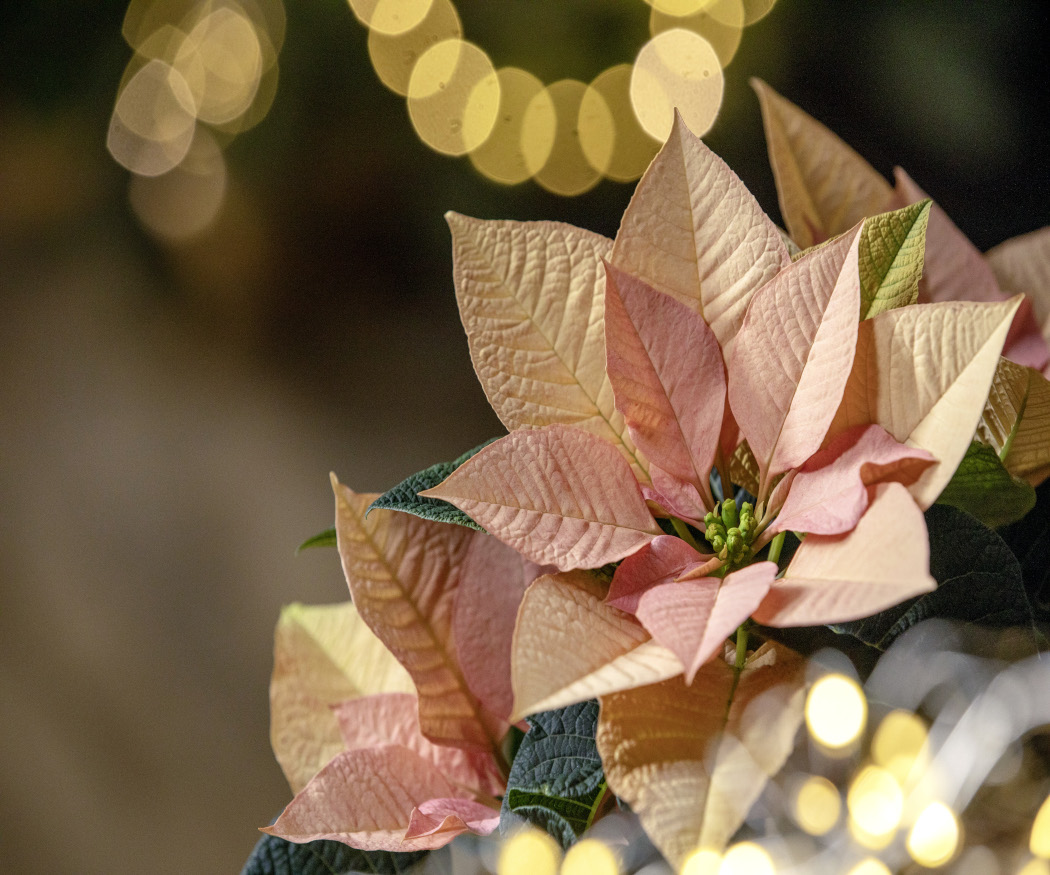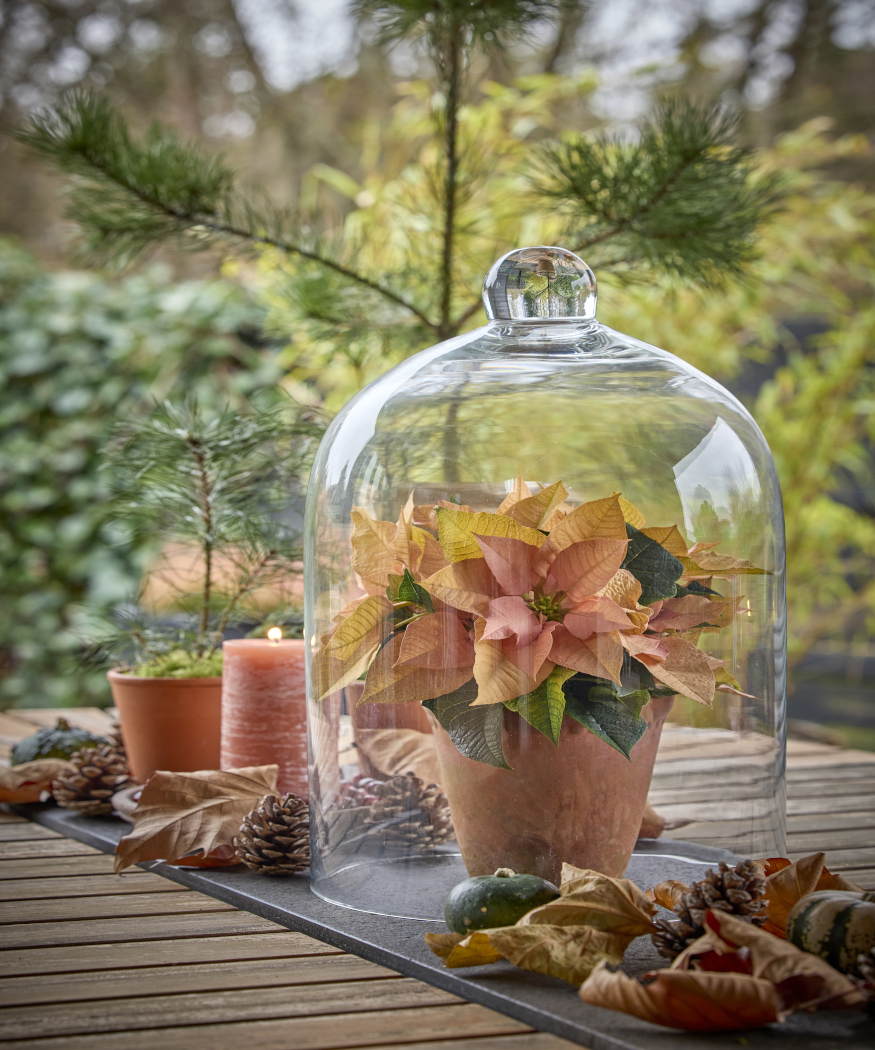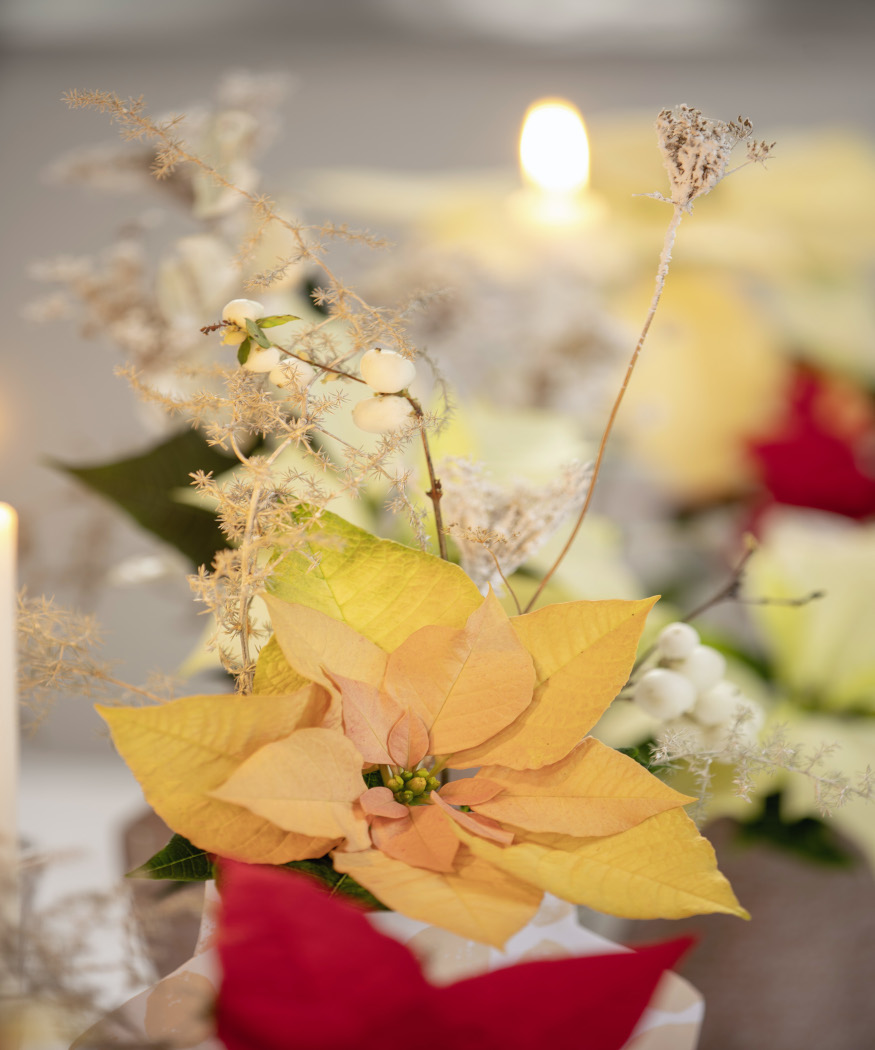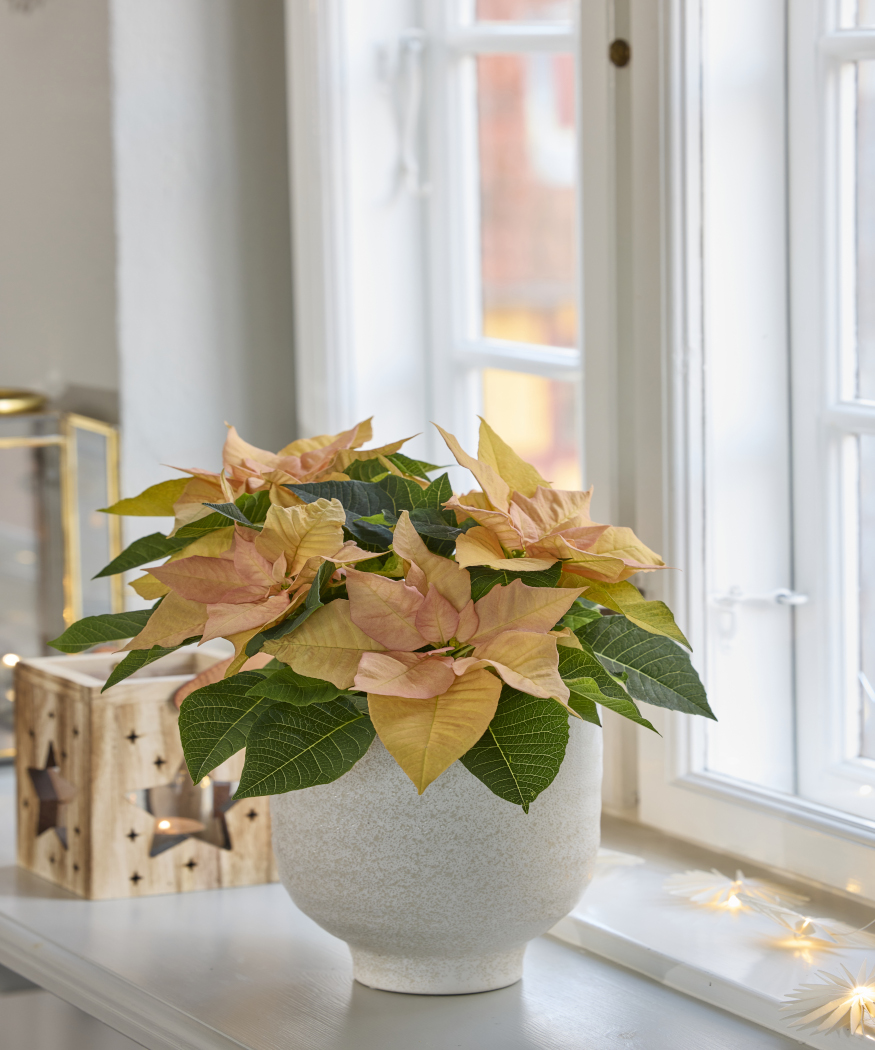Eye-catching poinsettias are not just for Christmas. With their vibrant red, cream, pink or apricot star-shaped bracts, they add colour to interiors throughout autumn and winter. Autumn poinsettias are available in shops from September, while classic varieties are on sale from the end of October. With the right care, these winter bloomers will stay bright for many months. Here, the experts at Stars for Europe (SfE) tell you all you need to know.
The ideal start: Recognise quality when buying
Not all poinsettias are the same. To enjoy your plant for longer, look out for to how fresh it is from the start.
A quality poinsettia will have dense, healthy foliage, small budding flowers in the centre of the colourful bracts and no signs of wilting or leaf loss.
Plants displayed in draughty doorways or outdoors are best left on the shelf – cold, breezy conditions may have already damaged them, even if the effects won’t be apparent for days.


Transport: Wrap up warm!
The poinsettia is native to tropical Mexico, where it thrives in mild temperatures all year round. Although it flowers in winter over here, it is sensitive to cold.
Temperatures below 12°C can damage it, so wrap it up well during transport and protect it from the cold.
A short journey home without prolonged exposure to the elements or in an unheated car will ensure the plant doesn’t suffer.
The perfect location: Bright, warm and draught-free
Poinsettias like light and warmth. Temperatures between 15-22°C are ideal. A windowsill is perfect; even a south-facing one in winter is no problem. It’s important to protect your plant from draughts. When ventilating a room, move it to a place where it’s not exposed to sudden temperature changes. If your poinsettia is placed too close to radiators or fireplaces, the temperature will quickly become too warm for it.
Then there’s a risk it will dry out and its leaves will wilt prematurely. If the living room is too warm, a cooler, brighter spot in a bedroom, bathroom or kitchen may be a better choice. Too much heat isn’t the only thing that can harm poinsettias; certain fruits, such as apples, bananas and tomatoes, can also harm them. They emit ethylene, a ripening gas that causes the colourful bracts to wilt more quickly. So don’t place your plant next to a fruit bowl.
Water with care
Overwatering is one of the most common mistakes made with poinsettias. Allow the soil to dry out slightly between waterings and avoid waterlogging. A good test: When the soil feels dry to a depth of 2-3cm, or the pot feels noticeably light when lifted, it’s time to water. There are several ways to do this.
If you’re watering from the top, use a small amount of room temperature water and make sure no liquid is left in the pot 15 minutes after watering. Alternatively, pour the water directly into the drip tray so the soil can absorb it from below. Remove any excess fluid after no more than 15 minutes to avoid waterlogging. The immersion method is best for very dry soil or with mini poinsettias: This involves briefly submerging the entire pot in water to allow the soil to absorb it evenly. Then allow your plant to drain thoroughly before replacing it in its planter.
Overwintering poinsettias and bringing them back to life

It’s normal for poinsettias to lose their colourful bracts after flowering and go dormant for a few weeks until April. During this time they need little water and no fertiliser.
A cool, bright location with temperatures between 15-18°C is ideal. In spring, prune your poinsettia back and repot it in fresh compost. Then gradually increase watering and fertilise weekly.
As soon as night-time temperatures reach double digits, you can move your poinsettia outside to a partially shaded spot on a balcony or patio. It’s important to water regularly but sparingly – avoid waterlogging at all costs.
For your poinsettia to develop colourful bracts again, it must be kept in the dark for 12-14 hours a day for six to eight weeks, starting around September. It will then begin to develop its characteristic red, white, pink or other coloured bracts.
However, it’s important that the plant isn’t exposed to any light during it daily dark period. Even the smallest amount, such as the flickering of a television or the dim light of a street lamp, will disrupt the rhythm and delay flowering.
Weihnachtssterne als Schnittblumen
Weihnachtssterne sind nicht nur prachtvolle, pflegeleichte Topfpflanzen, sie punkten auch als voluminöse, preisgünstige und haltbare Schnittblumen.
Geschnittene Weihnachtssterne halten bis zu zwei Wochen, wenn direkt nach dem Schneiden der Milchsaftfluss gestoppt wird, indem die Stiele erst für einige Sekunden in etwa 60 Grad heißes, dann in kaltes Wasser getaucht und anschließend regelmäßig mit frischem Wasser versorgt werden.
 English
English Dansk
Dansk Deutsch
Deutsch English
English Español
Español Français
Français Hrvatski
Hrvatski Italiano
Italiano Magyar
Magyar Nederlands
Nederlands Norsk
Norsk Polski
Polski Română
Română Slovenský
Slovenský Slovenščina
Slovenščina Suomi
Suomi Svenska
Svenska Čeština
Čeština Ελληνική
Ελληνική Български
Български
